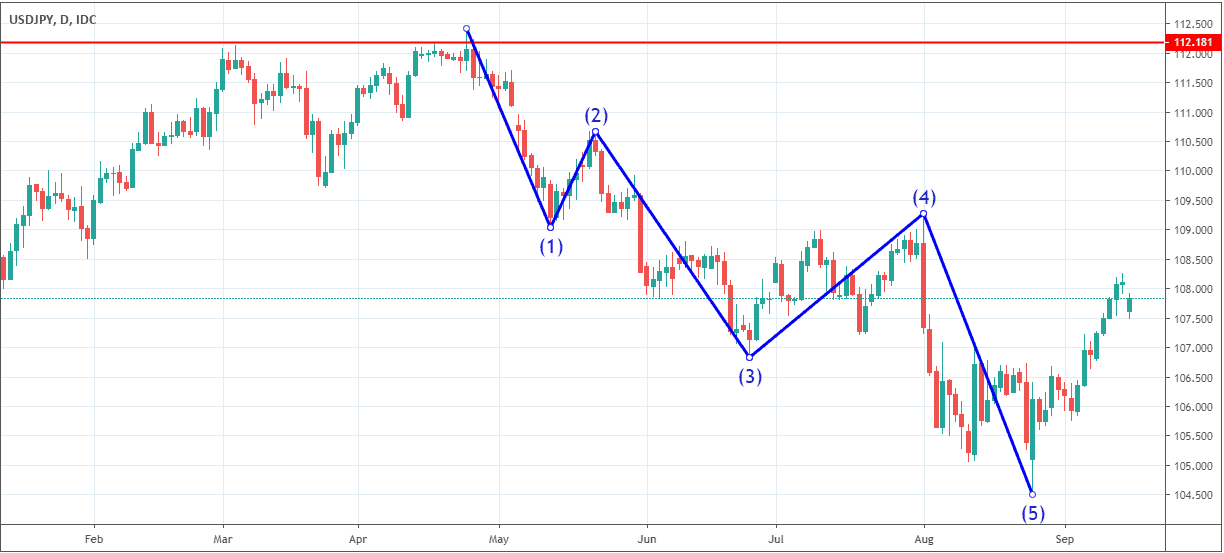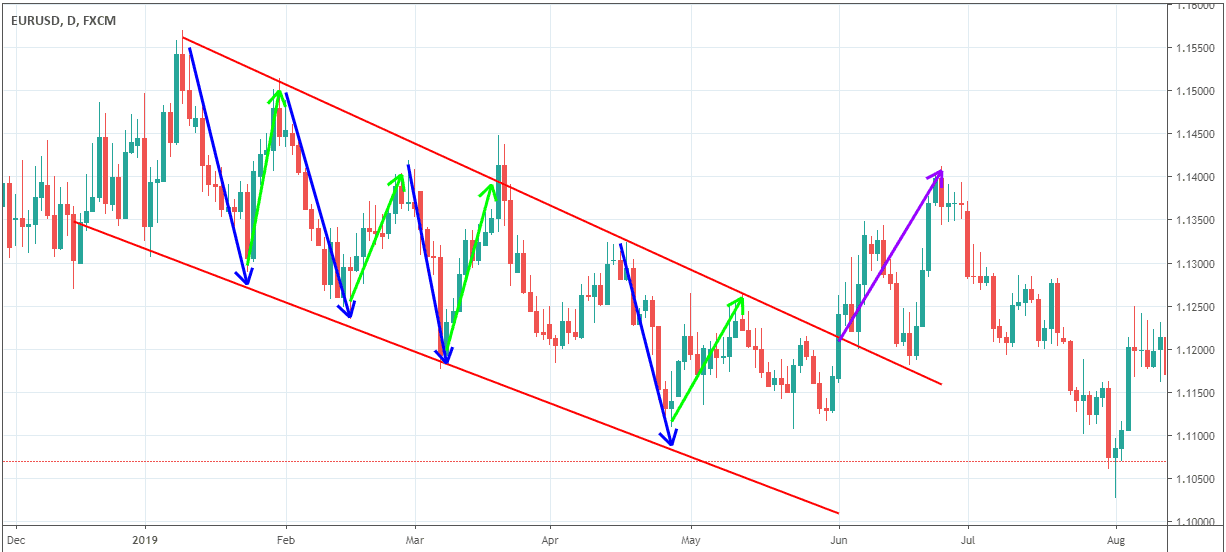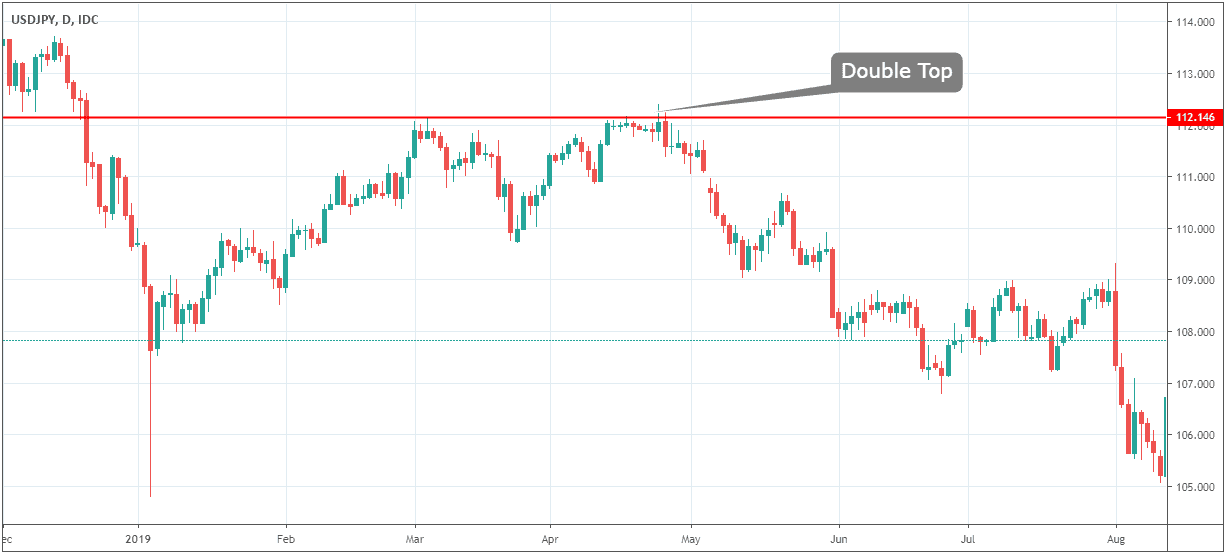The price action strategy is a trading approach where traders make decisions based solely on an asset’s price movement on a chart. They don’t rely on the fundamental issues like economic data, company financial statements, and news. Instead, they look at the performance of the chart and then react accordingly. The strategy has become very successful that a good percentage of traders use it to trade the markets. In this article, we will look at the price action strategy, as part of our series on technical analysis, and how you can use it to make money in the markets.
Contents
Best Price Action Strategies
The right price action strategy depends on how you trade and your comfort with risk. Experiment with different strategies to find what suits you best. There are many price action strategies. Some of the most popular price action strategies include:
Trend Following Price Action
The first important price action strategy you can use to trade the markets is trend following. As the name suggests, the strategy involves identifying a trend of a financial asset and then following it. It is also known as momentum trading because the goal is to identify a trend and follow it until the end.
The strategy uses the basics of the Newton Law of Motion. This law states that an object in motion will continue moving in a straight line until when it is met by an equal force in the opposite direction. The strategy can be used in all types of assets. The following are the main steps followed when using the price action strategy.
- Identify a financial asset. This could be a currency pair, commodity, or stock.
- Look at whether the asset is moving in an upward or downward trend.
- Initiate a trade in the direction of the trend.
Obviously, the biggest risk is that a reversal could happen. To stay safe, it is recommended that you use a trailing stop loss that captures the profits.
Every object in a state of uniform motion will remain in that state of motion unless an external force acts on it. — Sir Isaac Newton
Elliot Wave Principle Price Action
The Elliot Wave Principle is a trading strategy that uses the principles suggested by Ralph Nelson Elliot, who was a prominent writer. After years of studying the charts, Elliot observed that the price of assets tended to move in certain patterns. He named these patterns waves.
The first part of the Elliot Wave principle is the impulse wave and is usually in the direction of the trend. The impulse part is made up of five parts, which are numbered from 1 to 5. The next part, which is usually opposite of the overall trend, is known as the correction part.
How the Elliot Wave works
The USD/JPY pair below shows Elliot Wave at work. This wave has three principles.
- First, the wave starts after a pair or asset establishes a double bottom or a double top pattern.
- Second, the second wave cannot fully retrace the first part of the wave.
- Third, the third wave cannot be the shortest, and finally, the fifth wave is followed by a correction.

Channels and Breakouts Price Action
Another price action strategy involves the use of channels and breakouts. A channel refers to a period of successive support and resistance. It could be used to refer to when the financial asset is moving in a horizontal or diagonal pattern. When there is a channel, it usually means that the market is not fully-decided on the direction of the financial asset.
Therefore, traders buy when the asset reaches the support and then shorts when it reaches the resistance. A channel always leads to a breakout, which is a period when the market decides that the asset should move in one direction. As such, when used well, you can benefit when the price is moving inside the channel and after a breakout.
A good example of a channel and a breakout is shown on the chart below. As you can see, a price action trader could have shorted the EUR/USD pair every time it touched the support and bought it when it reached the resistance level. A breakout then happened after the fourth cycle.

Double Bottom and Double Top Price Action
Another popular price action strategy is that of using a double bottom and a double top. A double bottom happens when a financial asset retests a previous low, while a double top happens when it retests a previous high. When a double top happens, it is usually an indication that the price of the asset will start moving on an upward trend. A good example of a double top pattern is shown on the chart below.

Read also: Double top trading strategy guide
Candlestick Patterns Price Action
Another relevant price action strategy you can use is by observing the candlestick patterns. There are many patterns that can help you predict the future direction of a financial asset. There are several types of candlestick patterns.
- Reversal patterns include the likes of the hammer, engulfing pattern, dark cloud cover, and piercing patterns.
- The stars include the likes of the morning star, evening star, morning and evening doji stars, shooting star, and the inverted hammer.
- The continuation patterns include the likes of the three white soldiers, separating lines, and windows.
A good summary of some of the candlestick patterns is shown below.

Can You Make Money With Price Action Trading?
The price action strategy is one approach you can use when trading financial assets like currencies and metals such as gold. Price action focuses on reading price movements directly, which can provide clear signals for trading decisions. It is possible to make money with price action trading. It is a strategy that has a proven record, and one that is easy to learn. In this article, we have just touched on the five of the most important strategies.
Trading has risks, so trade wisely and only invest what you can afford to lose. We recommend that you read more about the strategy, especially if you are just starting your trading journey.
Price action strategy FAQs
What is price action strategy?
Price action trading is a strategy that relies on the analysis of historical price movements to forecast future price movements, without relying heavily on traditional indicators or external factors like economic data, company financial statements, and news.
What is the best price action strategy?
The best price action trading strategy depends on several factors, such as your unique trading style. Some of the most popular price action trading strategies include: trend following, Elliot Wave Analysis, channels and breakouts, and candlestick patterns.
What is the best price action forex strategy?
These are some popular price action forex strategies:
- Support and Resistance
- Trend Following
- Candlestick Pattern Trading
- Volume Analysis
- Fibonacci Retracement
- Moving Averages
What is price action strategy in stock market?
A price action strategy in the stock market is an approach to trading that focuses on analyzing and making trading decisions based on the actual price movements of a stock. Popular price action strategies in stock market include:
- Support and Resistance
- Trend Following
- Candlestick Pattern Trading
- Breakout Trading
- Pullback Trading
- Gap Trading
- Volume Analysis
What is price action strategy in crypto?
A price action strategy in the cryptocurrency market is an approach to trading crypto that focuses on analyzing and making trading decisions based primarily on the price movements of cryptocurrencies.
Who is the best price action trader in the world?
It's challenging to definitively identify the "best" price action trader in the world, as trading success can be subjective and can vary over time. Here are a few notable price action traders:
- Steve Nison
- Paul Tudor Jones
- Al Brooks
- Lance Beggs
- Chris Capre
- Johnathon Fox
